It’s February in the San Bernardino Mountains and winter is in full swing. There is a lot of beauty to be found in the snow covered forests, but, even for a native upstate New Yorker like me (read as 300 plus inches of annual snowfall), I find myself longing for a chance to dust off my quick draws and climb in the warmth of the sun. Red Rock Canyon National Conservation Area (aka “Red Rocks”), a mere four-hour drive from High Trails, offers the perfect getaway.
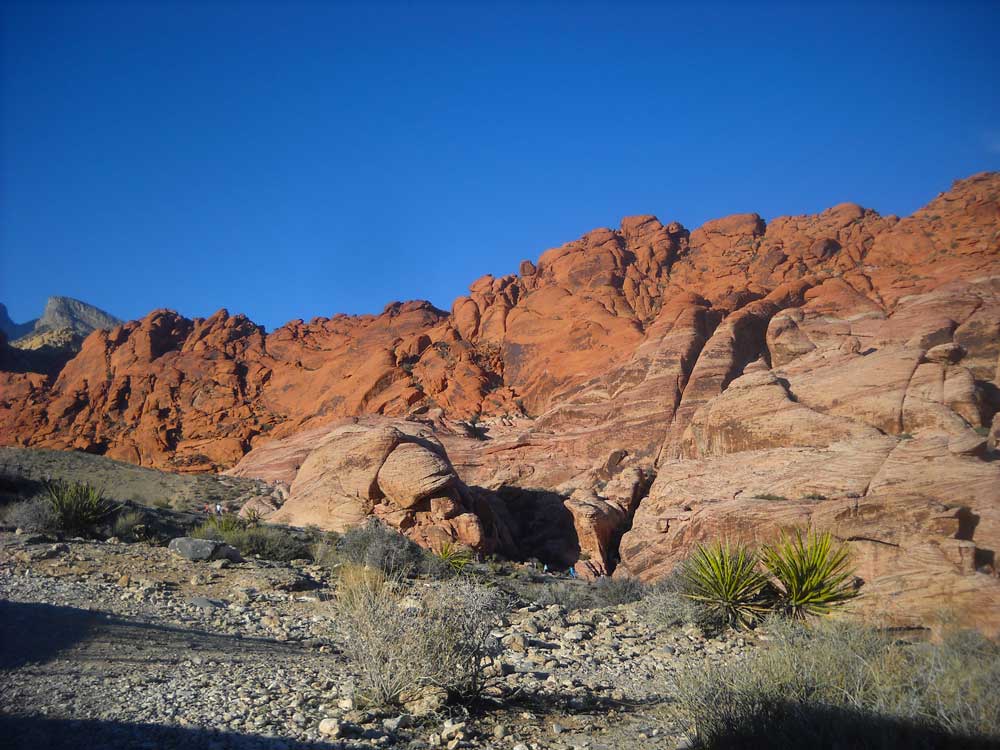 These were my thoughts as my friends and co-workers contemplated how to spend one of those sacred 3-day weekends that passes through the Winter/Spring season. I don’t think I can express fully enough how spectacular our trip was; Red Rocks is one of the natural gems of the south western United States, a place worth visiting for any person looking to spend a weekend outside, regardless of their specific hobby or interests.
These were my thoughts as my friends and co-workers contemplated how to spend one of those sacred 3-day weekends that passes through the Winter/Spring season. I don’t think I can express fully enough how spectacular our trip was; Red Rocks is one of the natural gems of the south western United States, a place worth visiting for any person looking to spend a weekend outside, regardless of their specific hobby or interests.
The park is constructed around a 13-mile scenic drive offering stunning views of the surrounding geologic features, the park lives up to its name and does not disappoint. It is important to know that the drive is a one-way loop, planning each full day’s activities is key to maximizing your time and enjoyment. The drive alone is well worth the photo opportunities, especially at sunset, but it also provides access to the parks’ multitude of hikes, biking trails, and world-renowned trad and sport climbing crags.
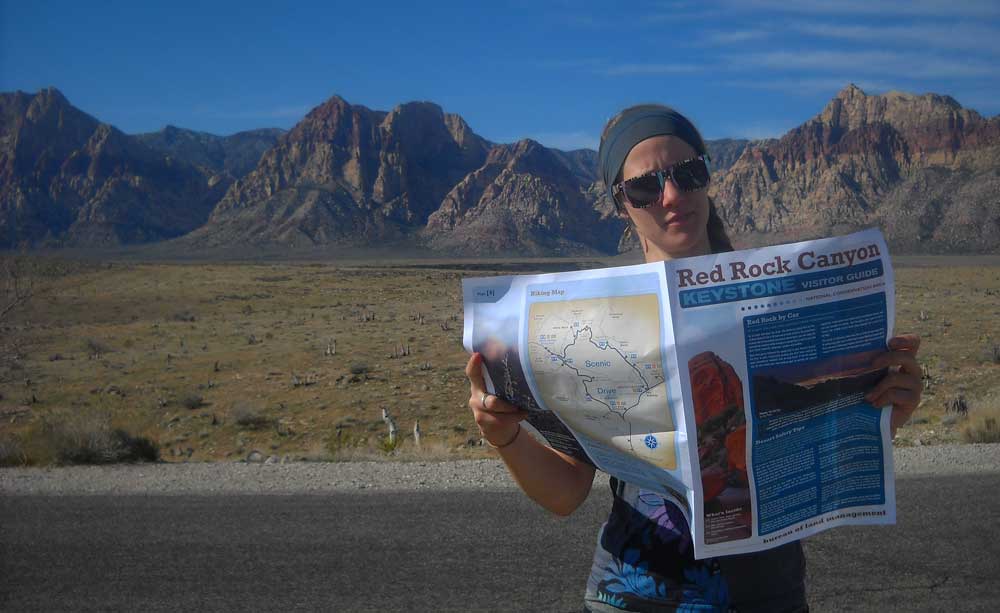 I think that the diversity of activities Red Rocks offers is part of what makes it such a wonderful place. My 3-day weekend in the park coincided with President’s Day weekend and the park was bustling with people; it seemed like everyone was there. Yet that was what made me realize the magic of Red Rocks; everyone was there. The train of cars was full of high-end sports cars; families packed into mini-vans; and old, dirt-covered SUV’s. Red Rocks isn’t just a place for dirt-bag climbers or only those wealthy enough to afford visiting; it is a park open and available to all. Humans of all walks of life being brought together by the singular beauty of a natural preserve; there is something simple and pure in that.
I think that the diversity of activities Red Rocks offers is part of what makes it such a wonderful place. My 3-day weekend in the park coincided with President’s Day weekend and the park was bustling with people; it seemed like everyone was there. Yet that was what made me realize the magic of Red Rocks; everyone was there. The train of cars was full of high-end sports cars; families packed into mini-vans; and old, dirt-covered SUV’s. Red Rocks isn’t just a place for dirt-bag climbers or only those wealthy enough to afford visiting; it is a park open and available to all. Humans of all walks of life being brought together by the singular beauty of a natural preserve; there is something simple and pure in that.
 For me, my trip was all about sport climbing and hiking. Red Rocks: A Climber’s Guide by Jerry Handren is an invaluable resource for anyone looking to appreciate the plethora of climbing offered. I spent two days exploring the crags accessible by way of “First Pullout”, the parking area by mile one of the drive; even then, I had only scratched the very surface of the climbing opportunities. On a previous visit I had spent my whole time in the “Black Corridor”, one crag accessed by one access point off the road; Red Rocks is a climber’s heaven. The uniquely hued sandstone offers well featured climbs scored into the rock by ages of weathering. Every route is just as much an abstract work of art as it is a kinesthetic puzzle. Climbers of any level can find the right level of challenge, from fun, casual 5.7 to mind-bending, finger-biting 5.11. The important thing is to do your research and come prepared.
For me, my trip was all about sport climbing and hiking. Red Rocks: A Climber’s Guide by Jerry Handren is an invaluable resource for anyone looking to appreciate the plethora of climbing offered. I spent two days exploring the crags accessible by way of “First Pullout”, the parking area by mile one of the drive; even then, I had only scratched the very surface of the climbing opportunities. On a previous visit I had spent my whole time in the “Black Corridor”, one crag accessed by one access point off the road; Red Rocks is a climber’s heaven. The uniquely hued sandstone offers well featured climbs scored into the rock by ages of weathering. Every route is just as much an abstract work of art as it is a kinesthetic puzzle. Climbers of any level can find the right level of challenge, from fun, casual 5.7 to mind-bending, finger-biting 5.11. The important thing is to do your research and come prepared.
 Weather can easily make or break your visit to Red Rocks. While nestled in the desert just west of Las Vegas, the occasional rainstorm will soak into the sandstone leaving it un-climbable for the next 48 hours after any rains have ended; check conditions ahead of time. On the other hand, Red Rocks more often represents your typical desert climate; bright, hot, and sunny days followed by crisp, cold nights, especially when there is wind. The average approach for any crag at Red Rocks involves 15-45 minutes of moderate hiking and scrambling through the deep cut features of sandstone. Sun exposure all depends on where you want to climb. For example, the “Black Corridor” offers near constant shade while “Panty Wall” offers near constant sunlight. All these factors will play into how much food and water you will need to bring with you for each day. In the chance you plan on being out past dark on a multi-pitch climb, be sure to check in at the Visitor’s Center and register your car with the local authorities; the scenic drive closes by sundown.
Weather can easily make or break your visit to Red Rocks. While nestled in the desert just west of Las Vegas, the occasional rainstorm will soak into the sandstone leaving it un-climbable for the next 48 hours after any rains have ended; check conditions ahead of time. On the other hand, Red Rocks more often represents your typical desert climate; bright, hot, and sunny days followed by crisp, cold nights, especially when there is wind. The average approach for any crag at Red Rocks involves 15-45 minutes of moderate hiking and scrambling through the deep cut features of sandstone. Sun exposure all depends on where you want to climb. For example, the “Black Corridor” offers near constant shade while “Panty Wall” offers near constant sunlight. All these factors will play into how much food and water you will need to bring with you for each day. In the chance you plan on being out past dark on a multi-pitch climb, be sure to check in at the Visitor’s Center and register your car with the local authorities; the scenic drive closes by sundown.
 As far as hiking, Red Rocks again does not disappoint. Swing by the visitor’s center before entering the scenic loop to pick-up a map and plan your day. The visitor’s center also boasts a tortoise habitat and a substantial indoor/outdoor informational display that is just as much an art installation as it is an educational experience about the park and conservation. It is well worth a visit and probably one of the coolest visitor’s centers I’ve been to in all of my trips over the past couple of years. We ended up picking two hikes to mix into our days of climbing: Keystone Thrust and Icebox Canyon.
As far as hiking, Red Rocks again does not disappoint. Swing by the visitor’s center before entering the scenic loop to pick-up a map and plan your day. The visitor’s center also boasts a tortoise habitat and a substantial indoor/outdoor informational display that is just as much an art installation as it is an educational experience about the park and conservation. It is well worth a visit and probably one of the coolest visitor’s centers I’ve been to in all of my trips over the past couple of years. We ended up picking two hikes to mix into our days of climbing: Keystone Thrust and Icebox Canyon.
Keystone Thrust is accessible from the Upper White Rock Spring parking lot. While listed as a moderate hike, I think it is best described as a mild elevation gain on a narrow but level trail. Located at the halfway point on the scenic loop, the hike provides scenic panoramas of much of the surrounding canyon and an up close encounter with some of the most prominent geologic features in the park.
 Icebox Canyon was one of the highlights of my trip. About ¾ of the way through the park loop begins a casual hike across rocky, desert terrain leading slowly up into the start of Icebox Canyon. The fun begins as you enter the shade of the canyon and feel the cool breeze of the seasonal snowmelt radiating outward; the trail starts to rise and drop sharply and boulder scrambling becomes essential to progress further up the canyon. The hike offers stunning views of the canyon, especially on a sunny afternoon as light illuminates the rock overhead. Also keep an eye out for a few boulder problems and the occasional offshoot trail to a sport or trad crag. The hike ends after about two miles as you approach a steep thirty-foot falls. During the winter season water is running in the canyon and there is a potential for snow; however, water rarely presents a hazard to hiking or closes down the canyon. If you are looking for a moderate and adventurous hike that doesn’t require more than a couple hours of commitment, Icebox Canyon is an absolute must.
Icebox Canyon was one of the highlights of my trip. About ¾ of the way through the park loop begins a casual hike across rocky, desert terrain leading slowly up into the start of Icebox Canyon. The fun begins as you enter the shade of the canyon and feel the cool breeze of the seasonal snowmelt radiating outward; the trail starts to rise and drop sharply and boulder scrambling becomes essential to progress further up the canyon. The hike offers stunning views of the canyon, especially on a sunny afternoon as light illuminates the rock overhead. Also keep an eye out for a few boulder problems and the occasional offshoot trail to a sport or trad crag. The hike ends after about two miles as you approach a steep thirty-foot falls. During the winter season water is running in the canyon and there is a potential for snow; however, water rarely presents a hazard to hiking or closes down the canyon. If you are looking for a moderate and adventurous hike that doesn’t require more than a couple hours of commitment, Icebox Canyon is an absolute must.
Again, I must admit that everything above barely begins to scratch the surface of all that Red Rocks has to offer. One could easily spend a couple weeks in the park and still find something new to do everyday. As far as lodging for a visit to Red Rocks there are a couple options. Camping is not available anywhere along the 13-mile loop, but the Red Rocks BLM campground is only a few minutes away, nestled between the park and downtown Las Vegas. The official campground offers the standard amenities of water, toilets, and RV hookups and has about 70 or so sites; however, it does not take reservations. On a busy weekend, the campground will easily fill up to maximum capacity, and thus I discovered Lovell Canyon.
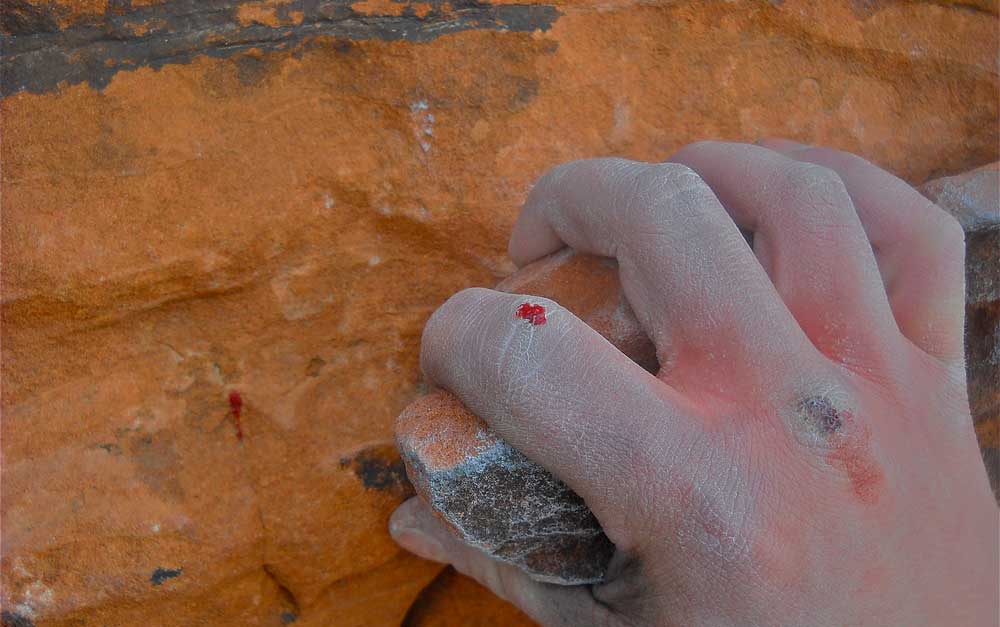 About twenty minutes past Red Rocks, towards Blue Diamond, Lovell Canyon is an expansive, free space for anyone looking to camp. A single paved road stretches for miles through public land, with dirt roads branching off on either side the whole way, each leading to various primitive camping spaces with fire rings constructed from local rocks. Lovell Canyon is an ideal open space at night for some desert stargazing and during the day has some spectacular panoramic views of the surrounding ranges. Since it is public land with little regulation you may find the occasional oddity or remnants of a prior weekend spent indulging in certain activities, like firearms. Nonetheless I felt safe in Lovell Canyon, but time spent camping there could also mean having some interesting neighbors. Ultimately, I think the area offers more than enough space for everyone to politely share.
About twenty minutes past Red Rocks, towards Blue Diamond, Lovell Canyon is an expansive, free space for anyone looking to camp. A single paved road stretches for miles through public land, with dirt roads branching off on either side the whole way, each leading to various primitive camping spaces with fire rings constructed from local rocks. Lovell Canyon is an ideal open space at night for some desert stargazing and during the day has some spectacular panoramic views of the surrounding ranges. Since it is public land with little regulation you may find the occasional oddity or remnants of a prior weekend spent indulging in certain activities, like firearms. Nonetheless I felt safe in Lovell Canyon, but time spent camping there could also mean having some interesting neighbors. Ultimately, I think the area offers more than enough space for everyone to politely share.
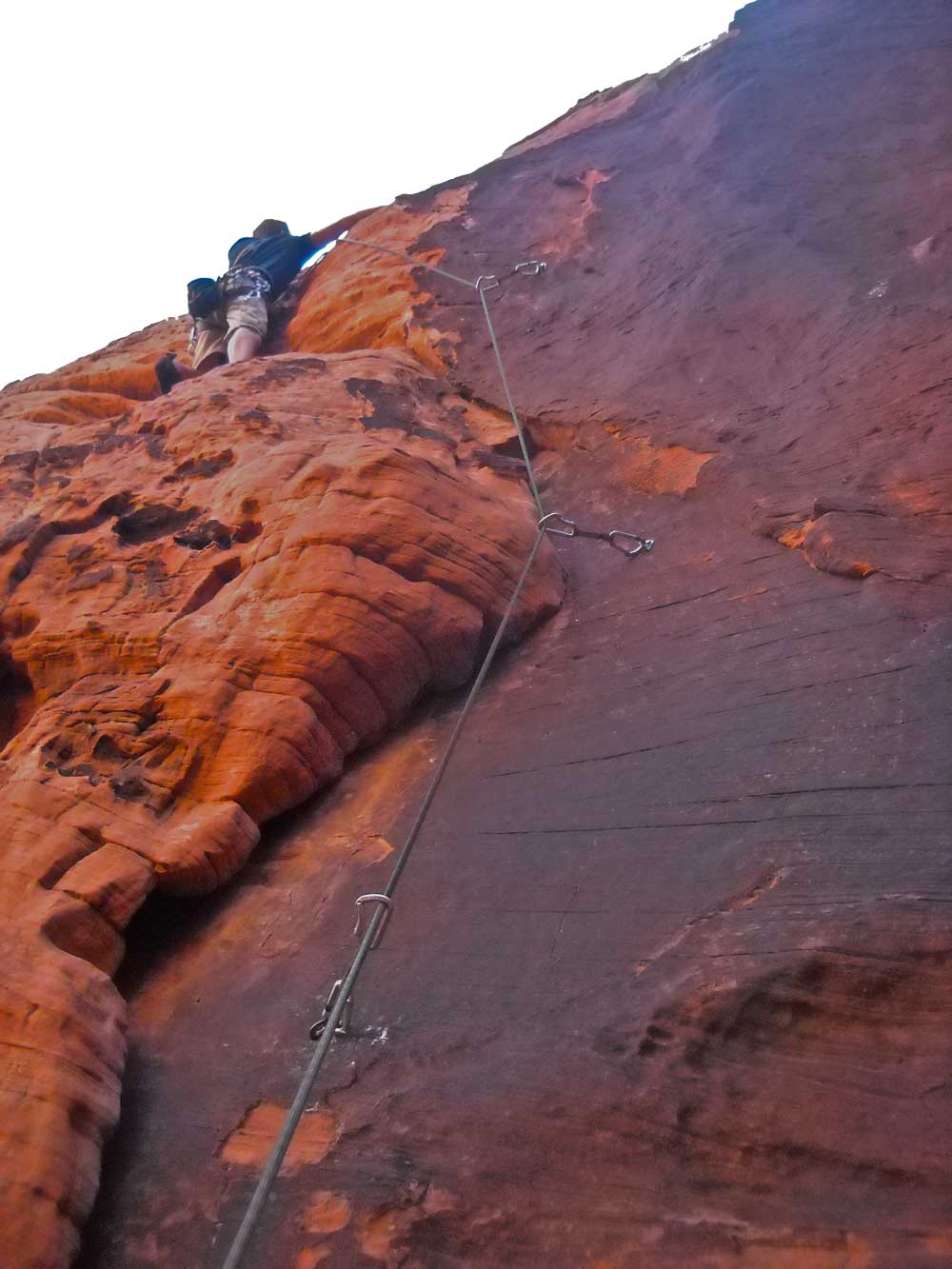 Of course, I can’t talk about lodging options near Red Rocks without mentioning the convenient access to downtown Las Vegas, about thirty minutes away. Whether you are looking for groceries, a break from camping food, free wi-fi, or to snag a hotel deal to shower off and explore the local city life, Red Rocks’ location enables access to pretty much anything, without having to do much driving.
Of course, I can’t talk about lodging options near Red Rocks without mentioning the convenient access to downtown Las Vegas, about thirty minutes away. Whether you are looking for groceries, a break from camping food, free wi-fi, or to snag a hotel deal to shower off and explore the local city life, Red Rocks’ location enables access to pretty much anything, without having to do much driving.
So if you have a free weekend, week-long holiday, or maybe even a whole summer between seasonal work, put Red Rocks National Conservation Area on your bucket list. It is an expansive, multi-purpose outdoor activity haven open to all and well worth whatever amount of time you have to visit.
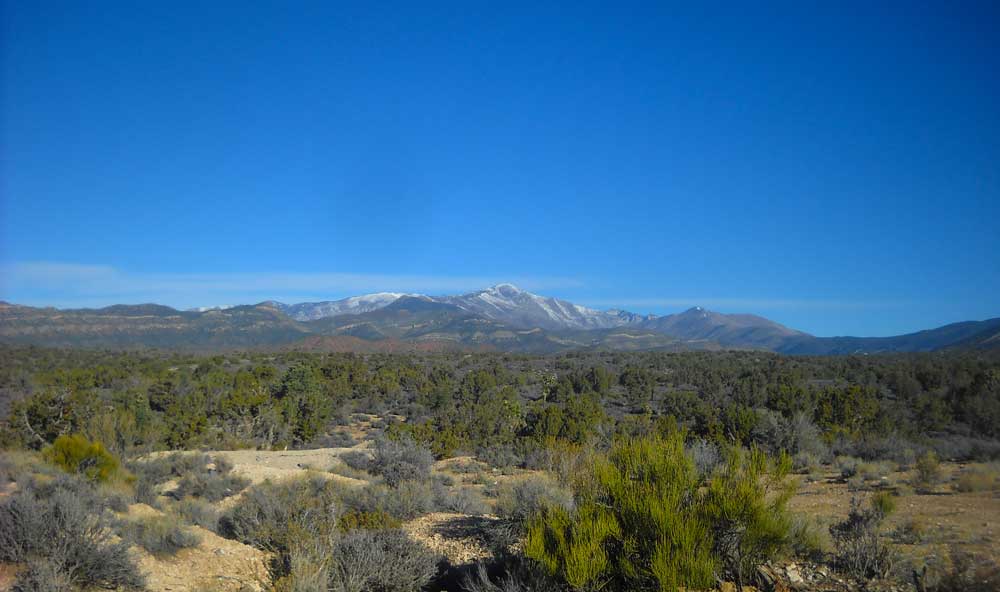 At High Trails Outdoor Science School, we literally force our instructors to write about elementary outdoor education, teaching outside, learning outside, our dirty classroom (the forest…gosh), environmental science, outdoor science, and all other tree hugging student and kid loving things that keep us engaged, passionate, driven, loving our job, digging our life, and spreading the word to anyone whose attention we can hold for long enough to actually make it through reading this entire sentence. Whew…. www.dirtyclassroom.com
At High Trails Outdoor Science School, we literally force our instructors to write about elementary outdoor education, teaching outside, learning outside, our dirty classroom (the forest…gosh), environmental science, outdoor science, and all other tree hugging student and kid loving things that keep us engaged, passionate, driven, loving our job, digging our life, and spreading the word to anyone whose attention we can hold for long enough to actually make it through reading this entire sentence. Whew…. www.dirtyclassroom.com

Comments are closed.